How to install the app on iOS
Follow along with the video below to see how to install our site as a web app on your home screen.
Note: This feature may not be available in some browsers.
You are using an out of date browser. It may not display this or other websites correctly.
You should upgrade or use an alternative browser.
You should upgrade or use an alternative browser.
Railway Stations in Pakistan
- Thread starter ghazi52
- Start date
ghazi52
PDF THINK TANK: ANALYST

- Joined
- Mar 21, 2007
- Messages
- 104,125
- Reaction score
- 106
- Country
- Location
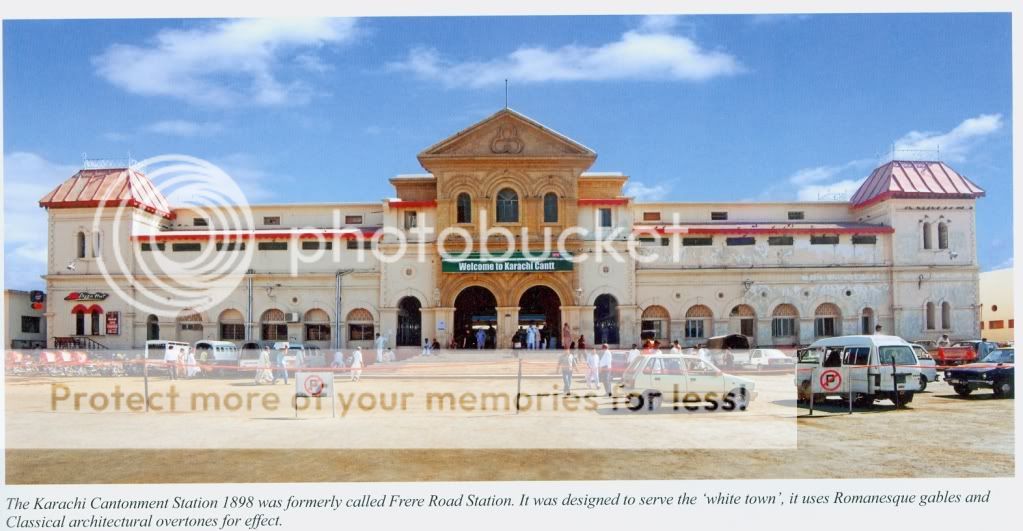
Pakistan Railways: End of a journey?
VAQAR AHMED —

Steam engine on display at Karachi Cantt. Station.
Railway stations and rail journeys are stuff dream, fantasies, adventure and endless stories are made of. Rail journeys are an apt paradigm for life itself; there is a beginning, then as you progress both the scenery and the fellow travelers change. Some that you yearn to stay, step off too soon at their own destinations; and some that you have to suffer on pain of death stay with you for the rest of your long journey.
Some fellow travelers become friends for life, some other just a fleeting snapshot in time. At each stop there is the anticipation of new itinerants. During all this, the landscape changes from flat lands to plateaus to lush green fields to wastelands, to high mountains and fearsome black tunnels. Sometime when you are brave enough to lean out of the window you can see both the head and tail of the train. For a moment, things fall in place only to hurtle you moments later into the darkness and confusion of a pitch-dark tunnel. There is endless anticipation, endless mystery: life running fast forward in time.

Quetta Railway Station 1890. -
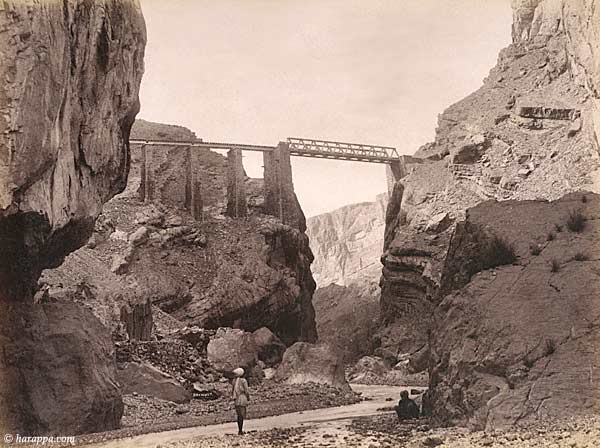
A Bridge on the Chappar Rift in Balochistan Circa1890.

A charter train (with engines at both rear and front) about to depart from Shahgai and descend out of the Khyber Pass to Jumrud, near Peshawar (1993). -

Sukkur Barrage Bridge over the mighty Indus. According to folklore the graves (in the foreground) belong to the seven female friends who lived together and decided never to marry.
I remember well the journey I undertook as a child from Quetta to Rawalpindi. The train cut across the barren mountains and through bone-dry places with chilling names like “Aab-e-Gum” (Vanished Water), charged headlong into the dark, unending, fearsome, Sibi Tunnel – the longest in Asia. Three black as night steam engines, one in the front and two at the rear, worked their heart out to pull the carriages through the steep mountains. The night was spent rocking through the icy cold deserts with the staccato of the wheels on the rails as a perfect lullaby. The silence was broken only by the shrill sound of the train whistle warning all to move out of the way or meet certain destruction.
After crossing the mighty Indus on the steel behemoth called the Sukkur Barrage Bridge, the train whistled through the green plains of Punjab, adorned in places by the bright yellow sunflowers, over shimmering rivers and finally curved through the endless rolling plateaus and ravines to reach Rawalpindi. This was a childhood adventure that will stay in the realm of my fondest memories, never repeated but forever told to my jet setting children.

Fast-forwarding from1968 to 2012, the dream world of railway travel has turned into a nightmare. No whistling, chugging, screaming, black monsters called steam engines; these have been scrapped and melted down for steel. One stands silent and still at the Karachi Cantonment Station as if mourning the passage of an era of mystery, reveries and hope. Tracks and locomotives are rusting away or pulled out of service due to a lack of maintenance. The few that work often stand idle due to a lack of fuel. The journeys start late or never. And if they do start, they end mostly late or never. Passengers are sprawled on platform, waiting, forever waiting.
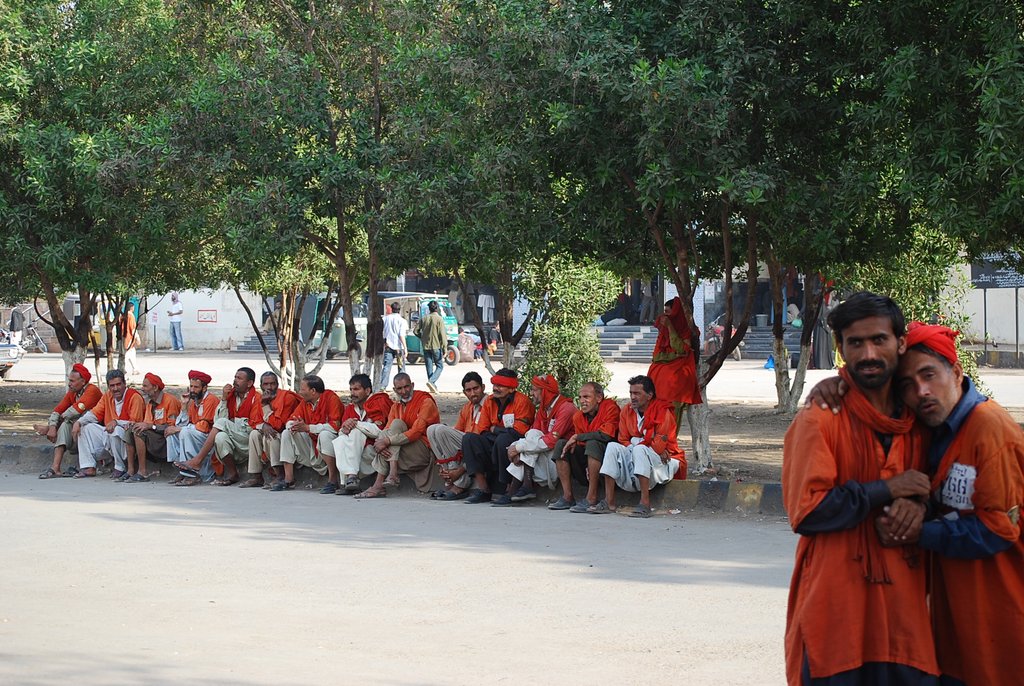
B+ Dracula
FULL MEMBER

- Joined
- Apr 3, 2014
- Messages
- 1,841
- Reaction score
- -2
- Country
- Location
Iam making one Guess.....(i used Train only 3-4 times in life)...So correct me if iam wrong
.
I believe Our People prefer DAEWOO & other Bus Traveling more than TRAIN....and the reason behind are that
.
a) Private Buses have better service plan then Gov regulated Trains
b) Buses are remote 24 hours all the time as compared to Trains...(no time waiting hassle ...etc)
c) Buses have stations inside the City ...so its convenient for passengers to take a ride anytime (even at dark night)
d) beleive it or not....MOTORWAY matters ........everyone gets exhilarated to travel by motorway......(it happens to me...probably it works for everyone)
........everyone gets exhilarated to travel by motorway......(it happens to me...probably it works for everyone)
e) One more Point..........You get DUSTY on Train....bcoz if you close your window others wont....so you observe heavy dusty storm inside the Boggy...
.
I believe Our People prefer DAEWOO & other Bus Traveling more than TRAIN....and the reason behind are that
.
a) Private Buses have better service plan then Gov regulated Trains
b) Buses are remote 24 hours all the time as compared to Trains...(no time waiting hassle ...etc)
c) Buses have stations inside the City ...so its convenient for passengers to take a ride anytime (even at dark night)
d) beleive it or not....MOTORWAY matters
 ........everyone gets exhilarated to travel by motorway......(it happens to me...probably it works for everyone)
........everyone gets exhilarated to travel by motorway......(it happens to me...probably it works for everyone)e) One more Point..........You get DUSTY on Train....bcoz if you close your window others wont....so you observe heavy dusty storm inside the Boggy...

dray
BANNED

- Joined
- Apr 8, 2013
- Messages
- 10,853
- Reaction score
- -1
- Country
- Location
Rawalpindi Railway station

How come it's so empty? In fact all the stations are almost empty!

Last edited:
Agent Smith
BANNED

- Joined
- Nov 4, 2014
- Messages
- 558
- Reaction score
- -12
- Country
- Location
How come it's so empty? In fact all the stations are almost empty!
how did you change your username Dray?
ghazi52
PDF THINK TANK: ANALYST

- Joined
- Mar 21, 2007
- Messages
- 104,125
- Reaction score
- 106
- Country
- Location
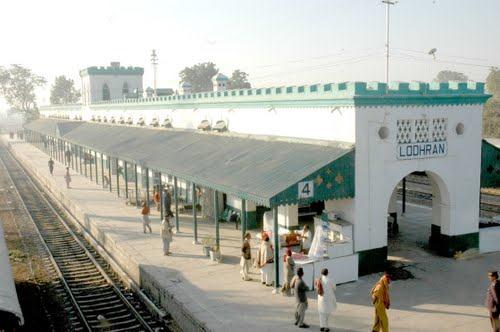
.
.
.
.
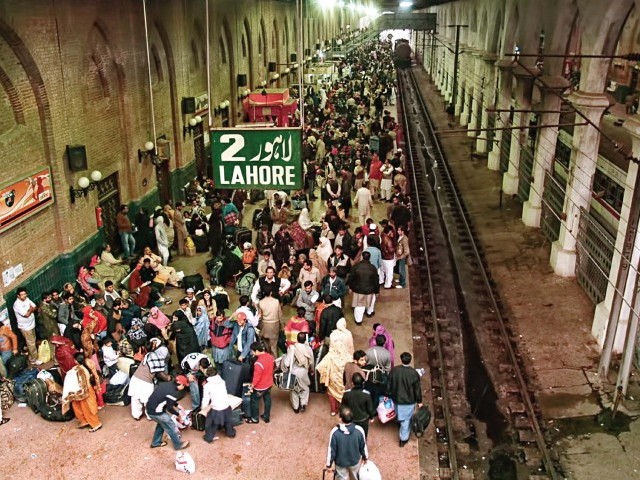
How come it's so empty? In fact all the stations are almost empty!
During

Eid
Mutakalim
FULL MEMBER

- Joined
- Oct 23, 2014
- Messages
- 1,975
- Reaction score
- 4
- Country
- Location
Yeah it is recent.Its nice to see a uncluttered & un crowded railway station.
Is this a recent picture ?
Rawalpindi Railway station is not as crowded as Lahore Railway station is.
rubyjackass
SENIOR MEMBER

- Joined
- Nov 29, 2008
- Messages
- 3,610
- Reaction score
- 0
- Country
- Location
Mann. Karachi Railway Station and Eid reminds me of 'Karaachi se, Karaachi se log Eid manane Lahore jaa rahe hai' news report.
.
.
.
.
During

Eid
Pakistan should simply introduced more and more trains without expecting profit for at least 20 years. Then the sector may improve. If it doesn't at least it provides a good cheap transport service to people like in India.
Totally agree. Screw those crammed buses where you can't even move your legs. In a train you can take a piss whenever you feel like, without begging the driver. Eat from hawkers. Go and check out girls in a different compartment.I travel between Karachi, Faisalabad and Lahore pretty frequently everywhere in business class.
its like a really comfortable journey.
Screw busses, and screw those who say otherwise.
All hail trains!
 Talk to strangers when you feel like. Sleep comfortably. The experience is the best and most comfortable anyday. You should come to India and travel, say from Delhi to Chennai or such long journeys. That will show you.
Talk to strangers when you feel like. Sleep comfortably. The experience is the best and most comfortable anyday. You should come to India and travel, say from Delhi to Chennai or such long journeys. That will show you.Totally agree. Screw those crammed buses where you can't even move your legs. In a train you can take a piss whenever you feel like, without begging the driver. Eat from hawkers. Go and check out girls in a different compartment.Talk to strangers when you feel like. Sleep comfortably. The experience is the best and most comfortable anyday. You should come to India and travel, say from Delhi to Chennai or such long journeys. That will show you.
Exactly man!
And been wanting to travel in Indian trains for quite some time now.
Surely going to go india for the sake of the trains once in a long vacation!
Similar threads
- Replies
- 7
- Views
- 483
- Replies
- 14
- Views
- 1K
- Replies
- 1
- Views
- 411
- Replies
- 0
- Views
- 314







